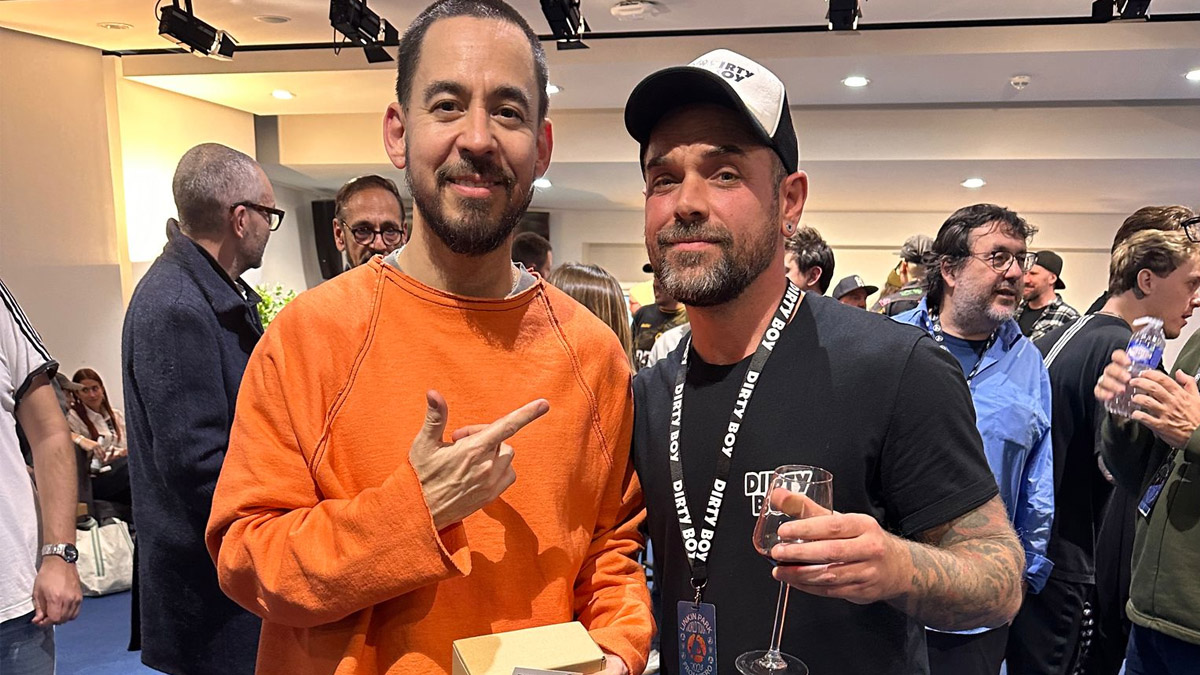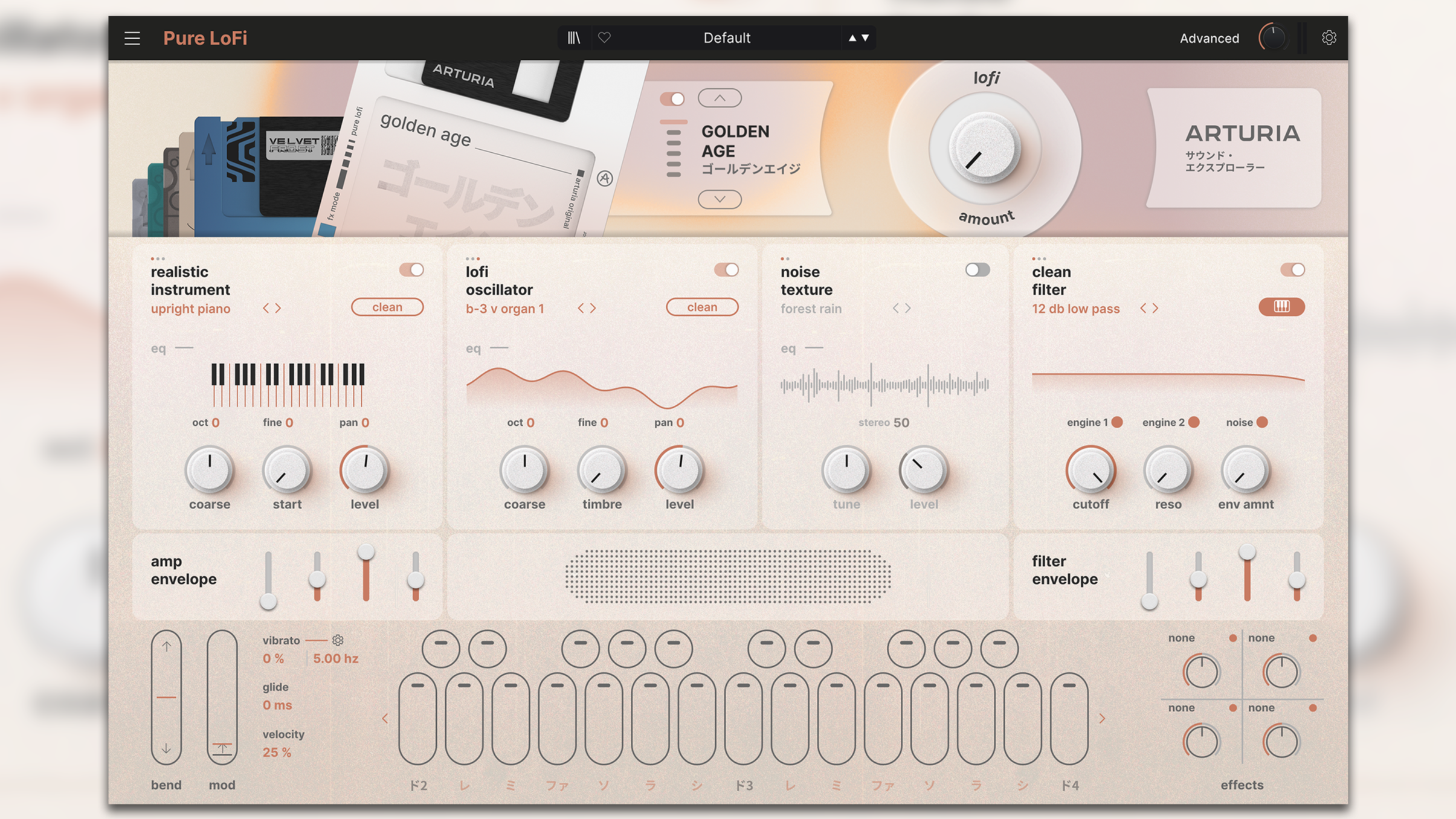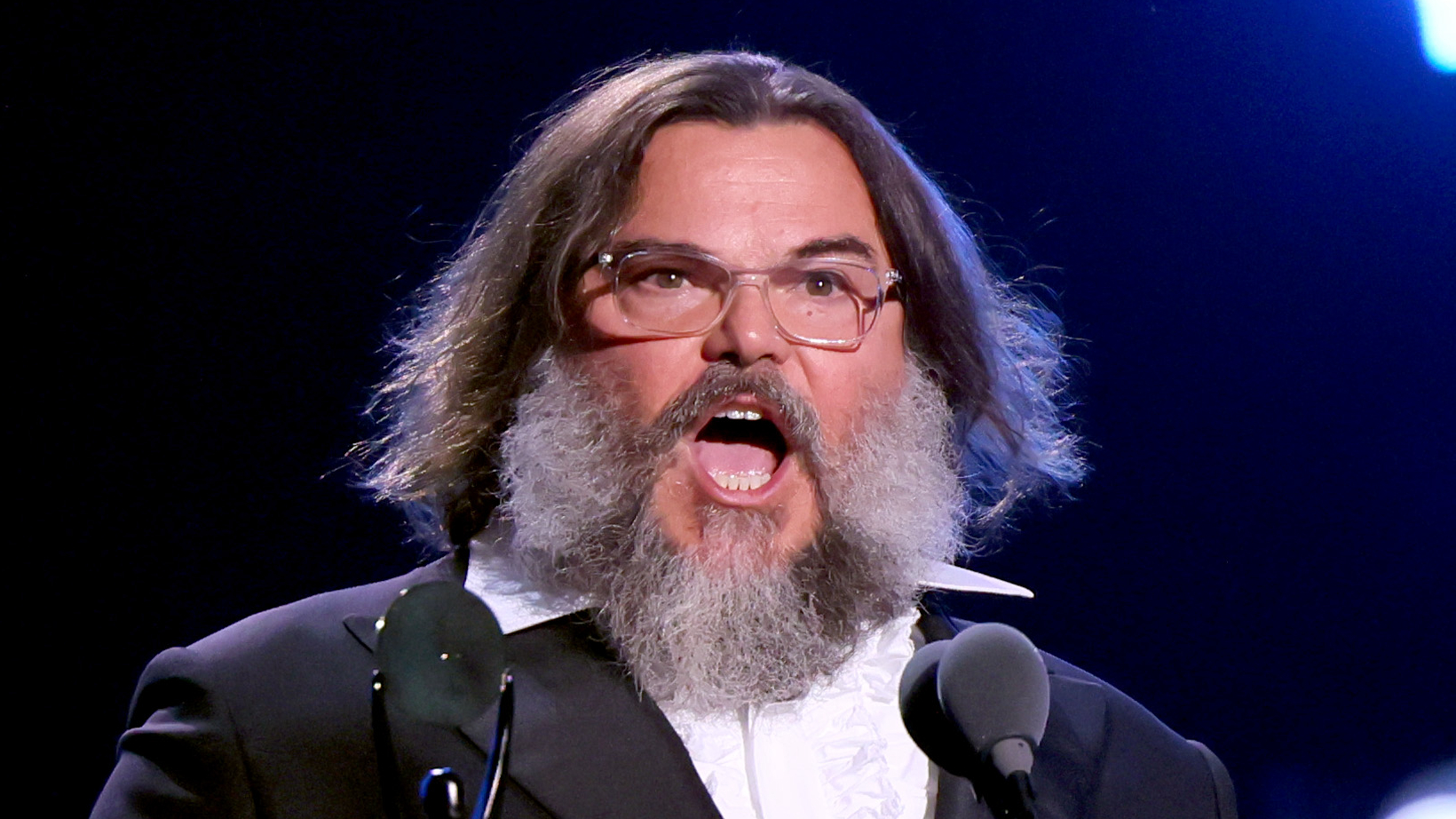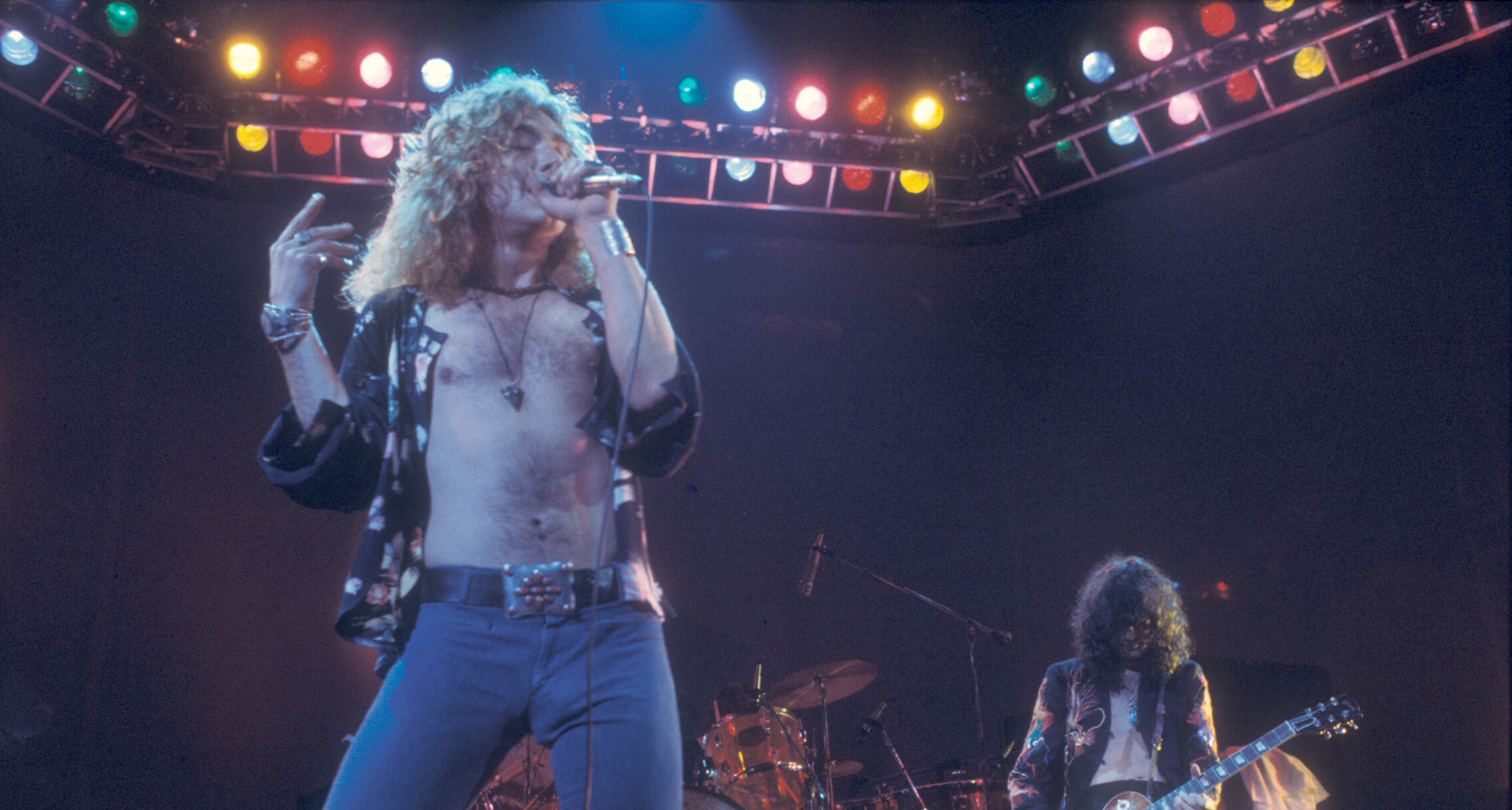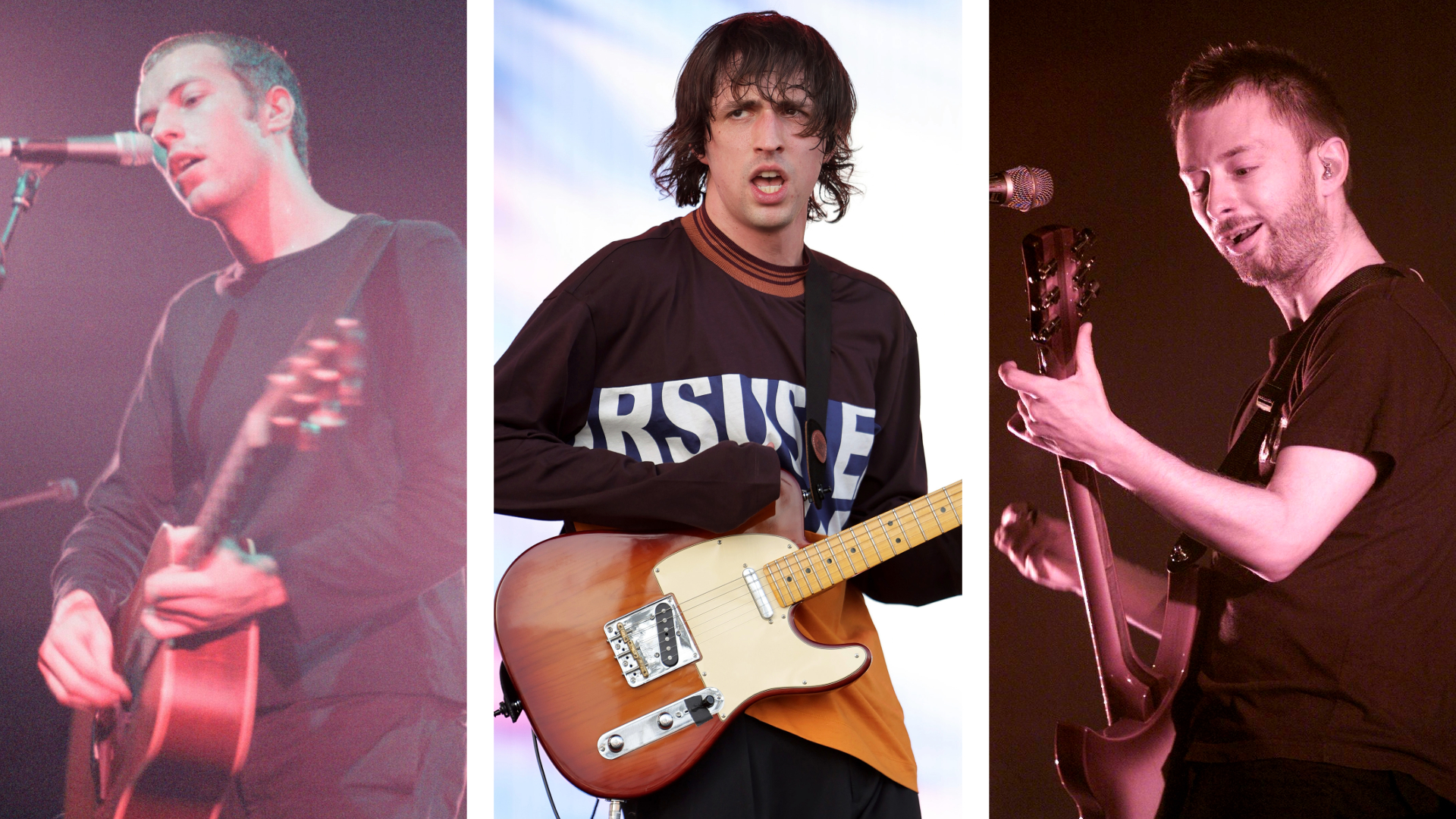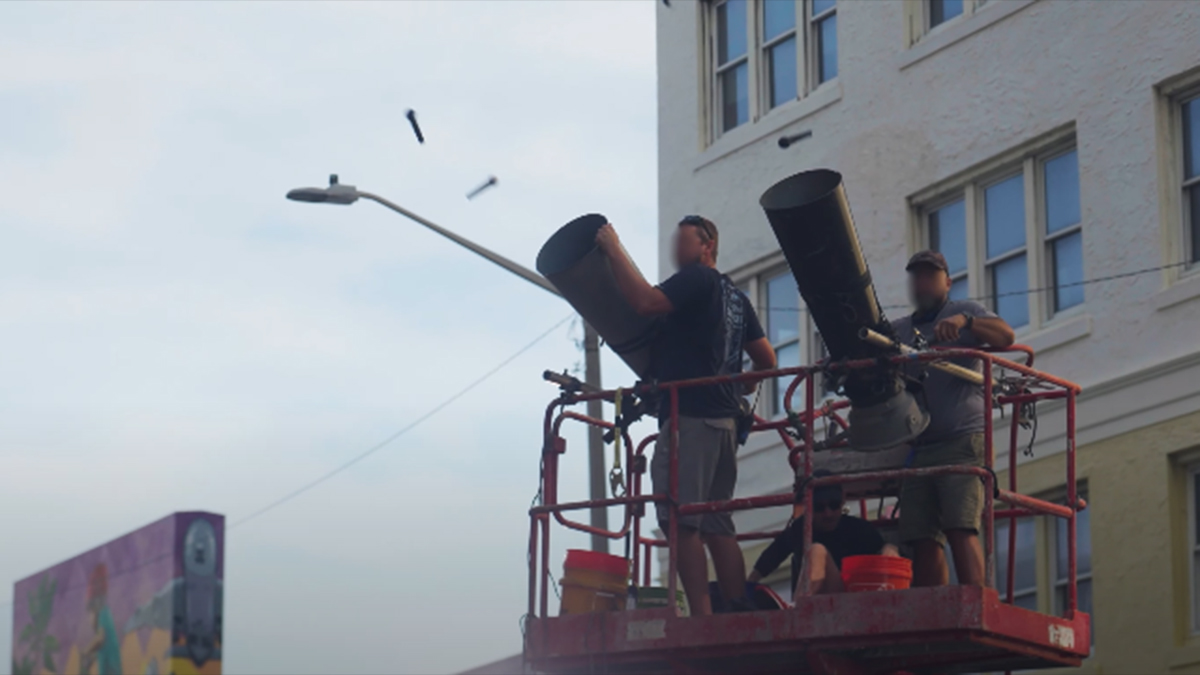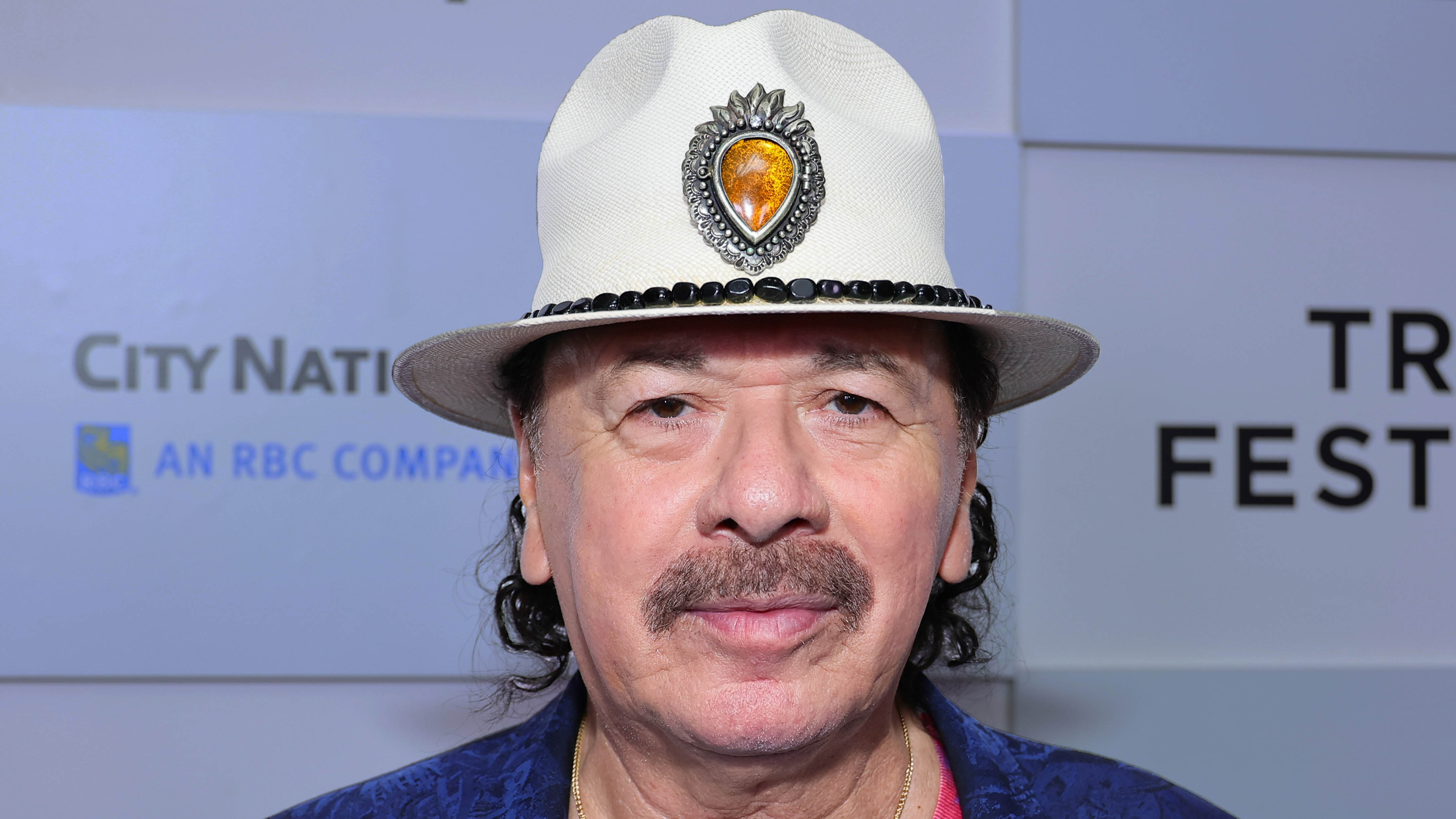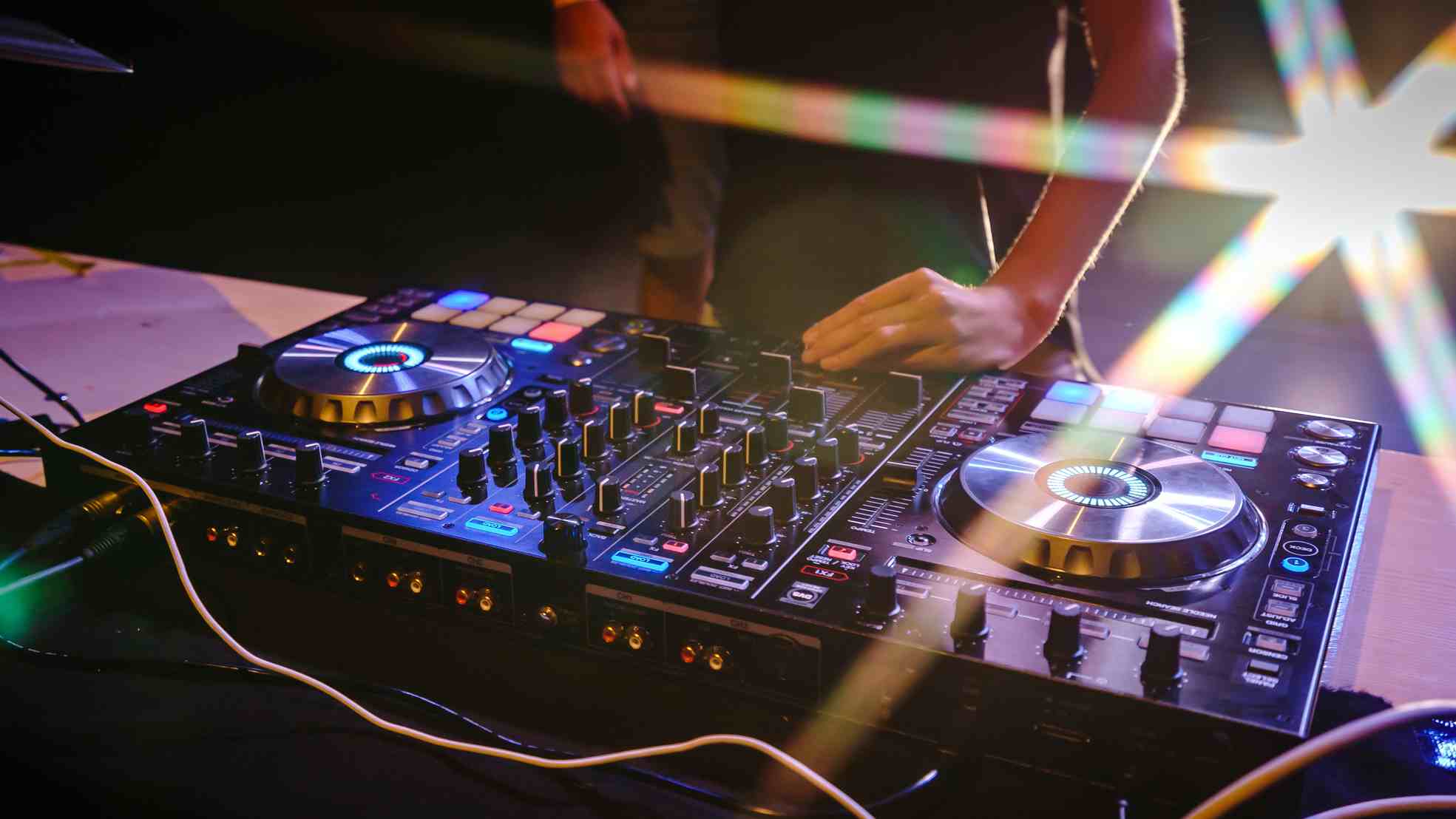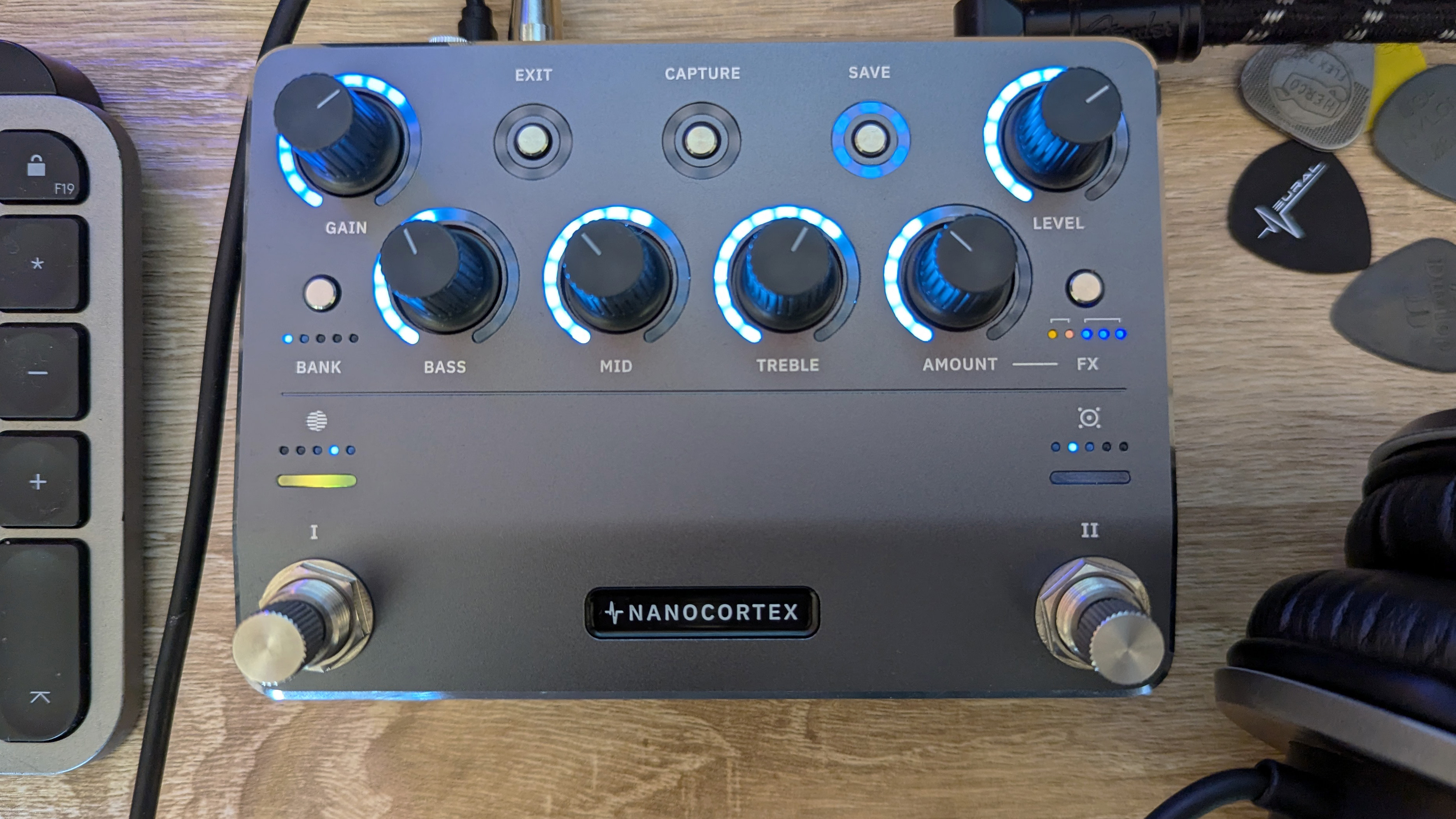Stone Sour's drum setup in pictures: Roy Mayorga shows off his kit
Plus Nick Raskulinecz and Roy's drum tech talk gear and production
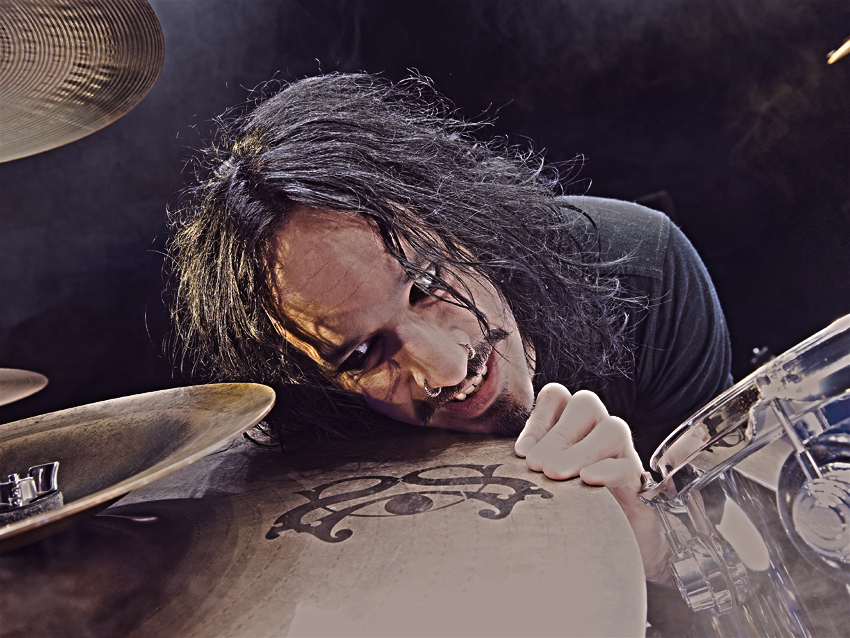
Roy Mayorga's drum kit in pictures
Despite already having two unit-shifting records under their belts, Roy Mayorga and Stone Sour entered 2010 still lurking in the shadows of Joey Jordison and Slipknot. By the time they welcomed in 2011, things looked very different…
A Top 10 UK album, a smash Number One US single, a blistering Download Festival performance and a breathtaking co-headline tour with Avenged Sevenfold saw the Corey Taylor-led Stone Sour establish themselves as a monster rock act in their own right.
Mayorga is the hard-hitting sticksman given the task of keeping this ever-growing rock behemoth under control. Having honed his chops with spells behind the kit for Soulfly and Nausea - as well as writing film scores and soundtracks between projects - it’s no coincidence that Mayorga is reaching his prime as Stone Sour blast the side project tag into oblivion.
Rhythm caught up with Roy Mayorga, his drum tech Ron Hise, and Stone Sour’s Audio Secrecy producer Nick Raskulinecz, to talk gear, production and playing live. Among the shots of Roy’s kit you’ll see in this gallery are snippets from all three interviews (you can read them all in their entirety in Rhythm issue 187), kicking off with Ron Hise and a closer look at Roy’s DW Collector’s kit…
- Find your next setup with our guide to the best drum kits
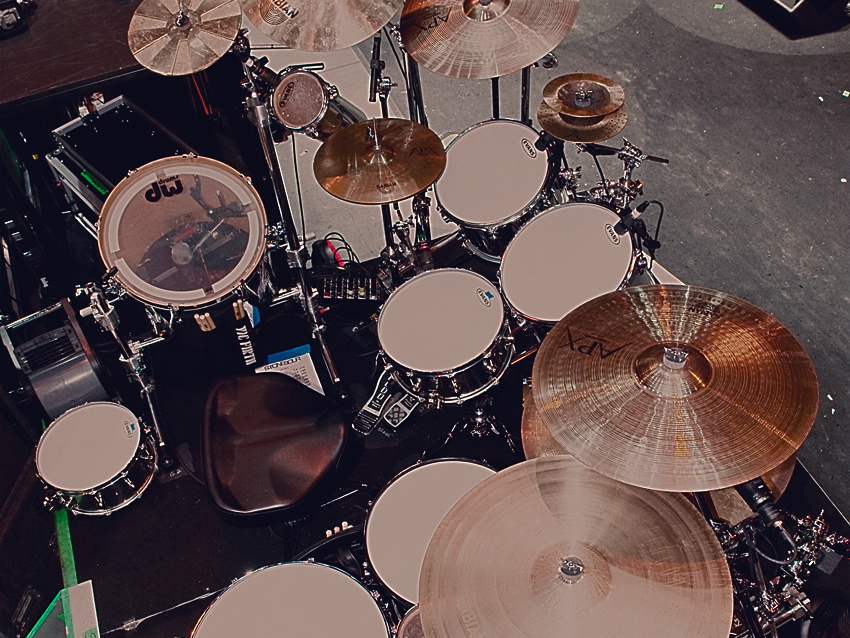
The kit
What kind of sound does Roy go for?
Ron Hise: "Roy is very much into very low-tuned drums. He uses DW Collector series VLTs. The shells are made for a very low pitch and very low tuning so that really helps out. You can only go so low on drums before they start to bottom out and you get no resonance out of them so that really helps to give Roy his sound."
Next: heads and sticks
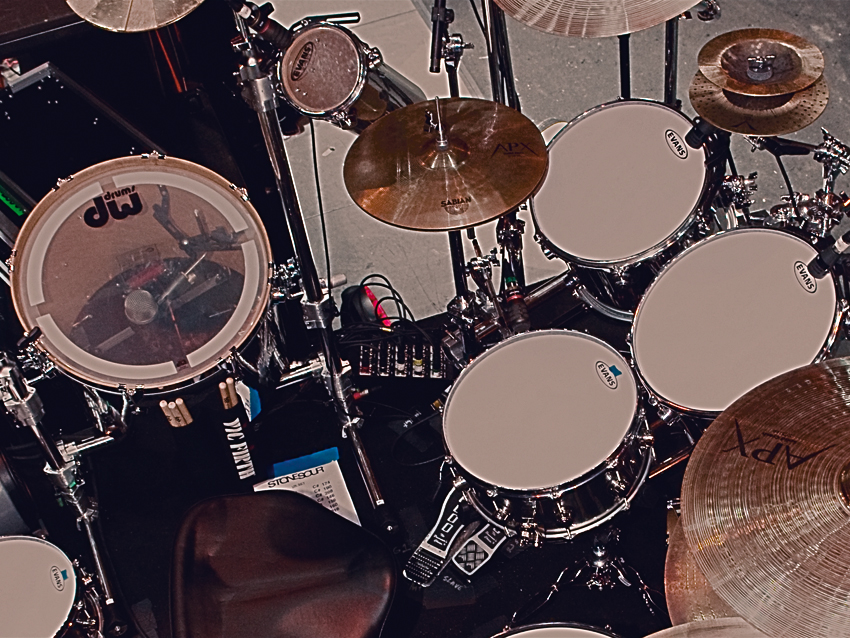
Heads and sticks
Does Roy get through many heads?
"Roy is a very hard hitter. I try to make the tom heads last two shows. We go through two snare heads a show. The kick drum head will usually last a little while but even that I’ll try to change once a week because you can’t chance anything. Going through that would be a disaster!"
How about sticks?
"He goes through a lot of them. He doesn’t break them, he’ll use them for a few songs then get rid of them. He’ll go through three or four pairs a show. Another thing he does is turn the stick around so he’s using the butt end for more of the tom-heavy songs."
Next: tuning and dampening
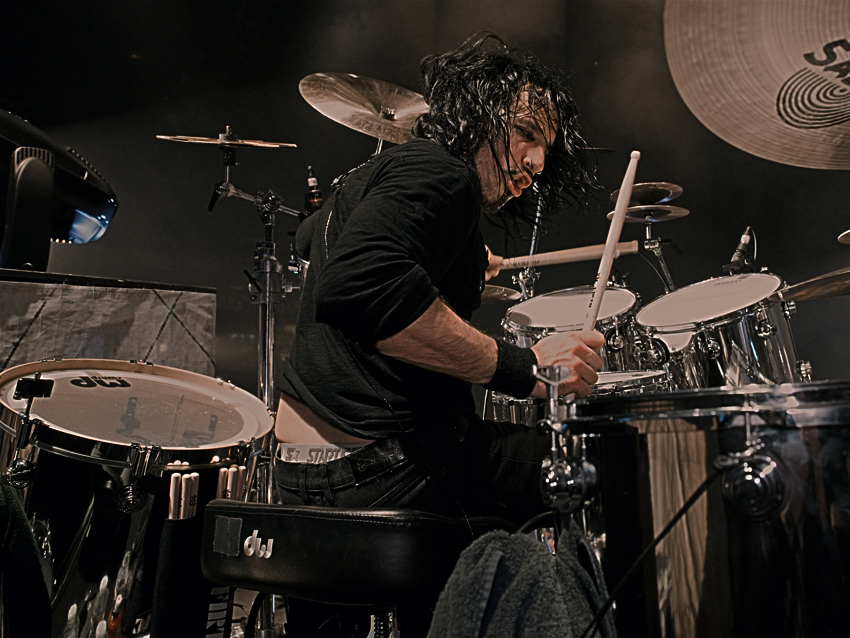
Tuning and dampening
Do you have a set tuning routine?
"We always start with the 18" first and then once we get a good tone out of that we work our way around to the smaller drums."
Do you use much dampening?
"He doesn’t like a lot of dampening. I might get away with using a bit of Moon Gel if for some reason his overtones are a bit out of control. But he’s very much into a wide-open type of sound.
"We try to stay away from it. Sometimes it’s called for when maybe something sounds a little off through the PA. Sometimes something can sound great when it’s right in front of you but doesn’t translate through the PA."
Next: snare
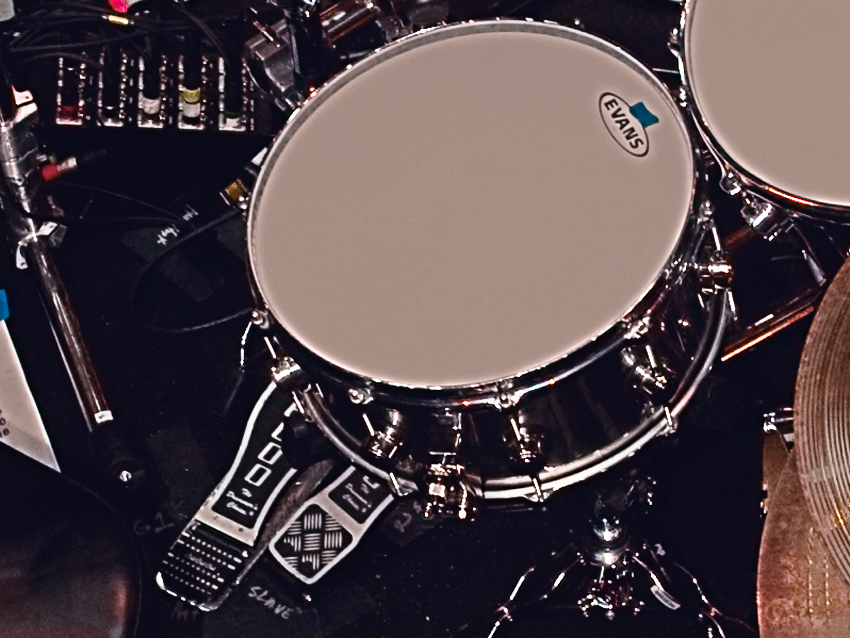
Snare
Is Roy hands-on when it comes to getting his sound right?
"Absolutely. That’s one of the things I like about Roy. It’s nice to have somebody come by and hang out and he’ll say, ‘Let’s try this.’ He’s also very keen on his snare sound. He’s taught me some things as well. He likes to tune the bottom snare head to A440.
"He tries to find that note like a guitar player does when they’re doing a standard tuning. That’s great because once the bottom head’s tuned to that you can tune the top head to anything and you’ll get a great sound."
Next: octobans and gongs
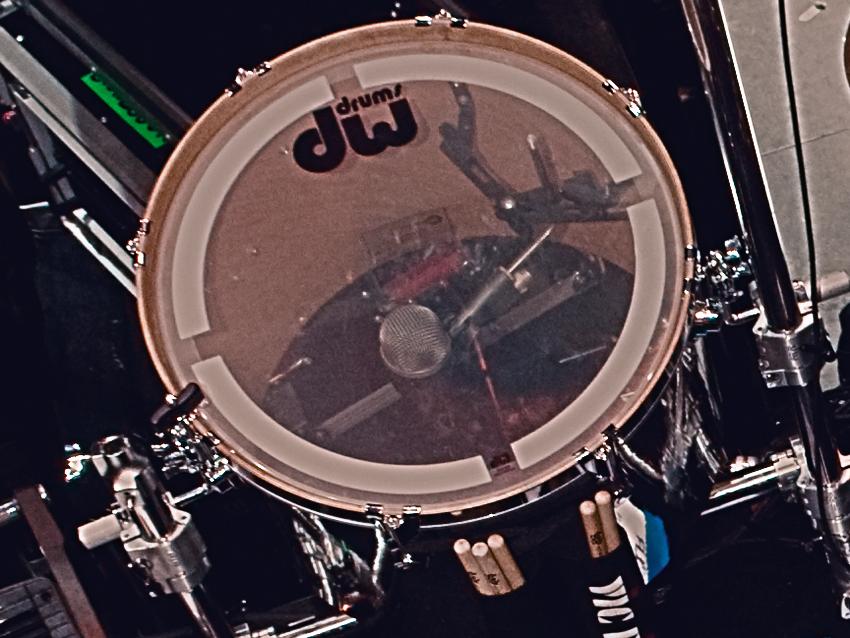
Octobans and Gongs
Is there anything unusual about Roy’s set-up?
"For the first time I’m using DW’s version of Octobans. That’s something I’d never experimented with so it’s been cool. He also has the big Gong drum. There are two different sounds that are totally at different ends of the spectrum."
Next: cymbals
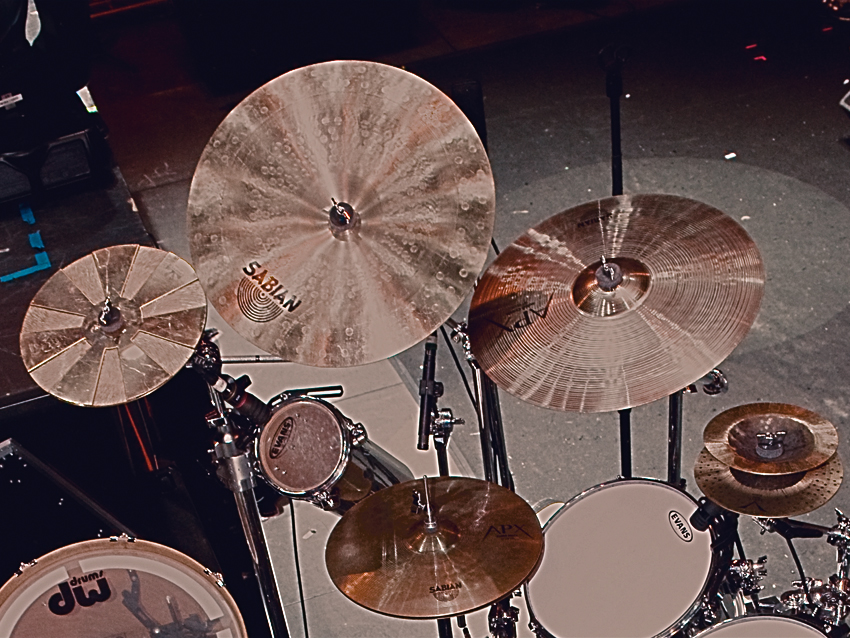
Cymbals
"He also uses different types of Sabian Effect cymbals, things that give off different sounds. That’s another thing about Roy that I like, he’s not afraid to experiment."
Next: Roy Mayorga talks Stone Sour
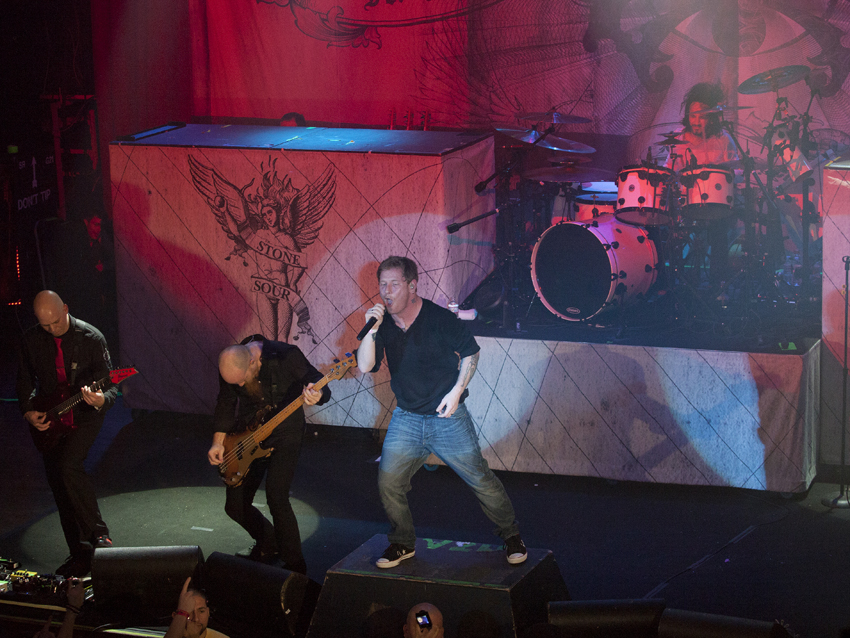
The Stone Sour gig
So, how did the Stone Sour gig come about?
Roy Mayorga: "I came in on the second album but I wasn’t a member yet. Their drummer had left and I just played what he wrote, I wasn’t putting any personal stamp on it because they weren’t sure if he was going to stay or not.
"Audio Secrecy is definitely my first real album with Stone Sour. Not just in putting my personal stamp but I also got to write songs. I’ve been writing for years but I’ve never before been in a situation where the band wanted to hear a song from the drummer!"
"Usually drummers are looked at like, ‘You just play drums, shut up.’ But it’s not like that. If you have more than one talent to play an instrument, why not play it and expand yourself. There’s no reason to keep yourself in one corner, you can be in many corners and fill the room.
"I play bass, guitar, drums and keys. The instruments you need to write rock songs. It was great they embraced that and encouraged me. I got the green light and I went to town and dove into myself and tried to bring this music out of my body and get it on the record."
Next: writing
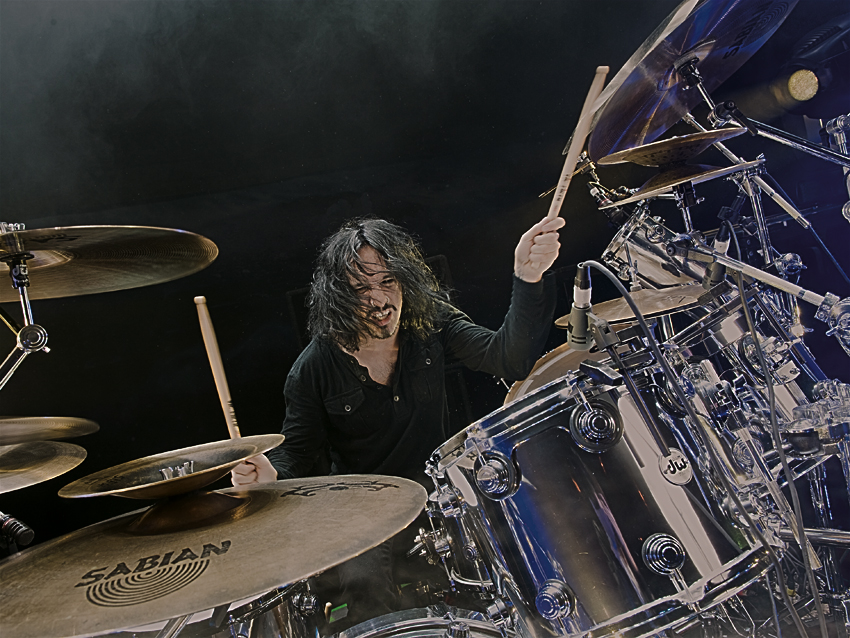
Writing
How do you approach writing tracks?
"Some songs, it starts on drums. Nylon 66 started out as a drum riff with the opening 6/8 beat. I remember I’d just put fresh heads on my kit and was trying out the kit and thought it sounded pretty cool so I recorded and looped it then came up with the guitar line and then that song wrote itself.
"Or I’ll start with a click track and play my guitar parts, then play drums and build from there. Once I get the drums down I re-track the guitar and bass then add the weird ear candy, mix it and send it off to the boys."
Next: film scoring and experimentation
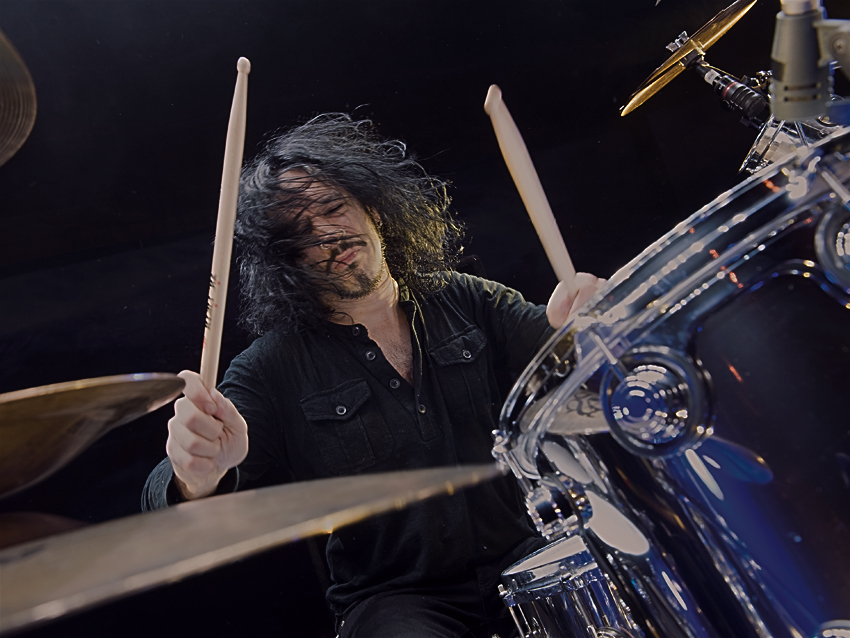
Film scoring and experimentation
Does your film scoring experience help?
"I think it has in a way. It’s definitely opened up the door of dealing with dynamics. Just quiet and loud and soft. It’s helped me orchestrate things in my mind a little more with drumming and tones. I have different bells and cymbals, I like different textures. Classical music helped me to write a certain way.
"Everyone should have an open mind and listen to everything. There’s a lot of great music out there. There’s great country music, blues, hard rock, metal, electronica, there’s no such thing as bad music. The inspiration is there for the taking, you’ve just got to have open ears for it."
Next: practice and inspiration
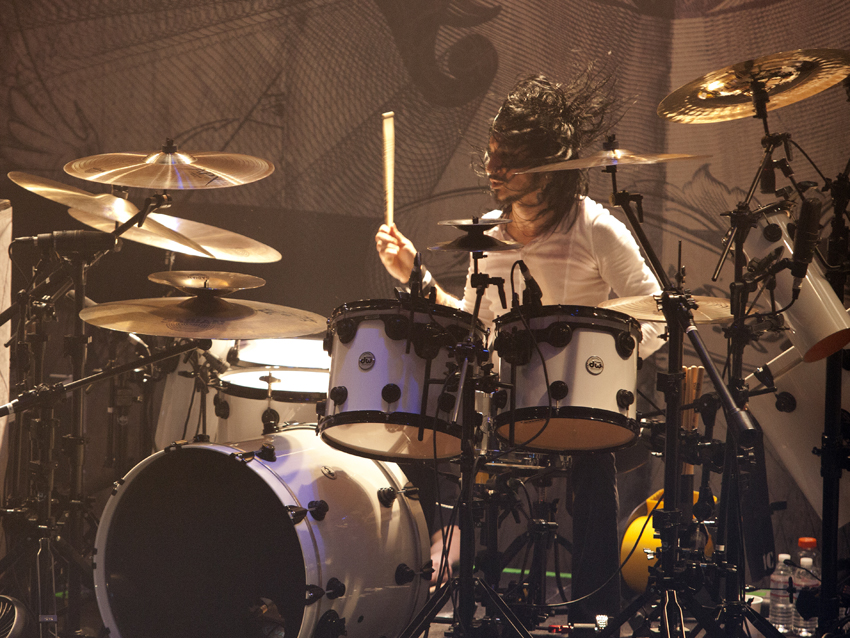
Practice and inspiration
Do you think you’ll return to film scoring?
"I will when I have more downtime and the opportunity’s there. Right now I keep my chops up and practise writing that way. I have a MacBook and Logic Pro and I usually just dabble with that.
"During the day if I have an idea I’ll just get that up and put an image up and write to the image or a feeling. If I feel sad and morose I’ll write something like that, if the sky is gloom and doom I’ll have inspiration to write to that."
Next: arrangement and engineering
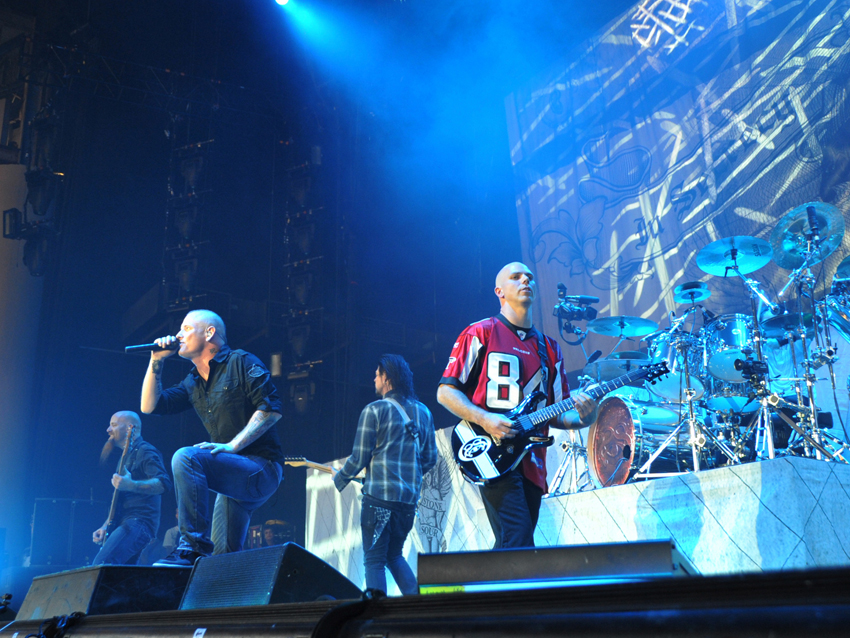
Arrangement and engineering
How did you get involved in music production?
"Just through writing music. I got into arrangement and engineering when I was about 15. I was doing a lot of writing and arrangement on my brother’s keyboards. He had a sequencer, a couple of keyboards and a four-track. I was really into sound and the idea of recording onto tape.
"I got into editing and I got more into live engineering. I started working at CBGB’s and learnt how to do front-house live, and that got me more into the studio side of things. When I started recording with bands I really got into engineering and learning about mic placement and frequencies and compressors and EQs.
"I just found that more satisfying. You catch a moment which is unlike live, which is gone and forgotten. Well, not anymore because now it’s on YouTube! I just love working with sound and manipulating instruments, making them do things they don’t normally do."
Next: drum miking and ‘that Bonham sound’
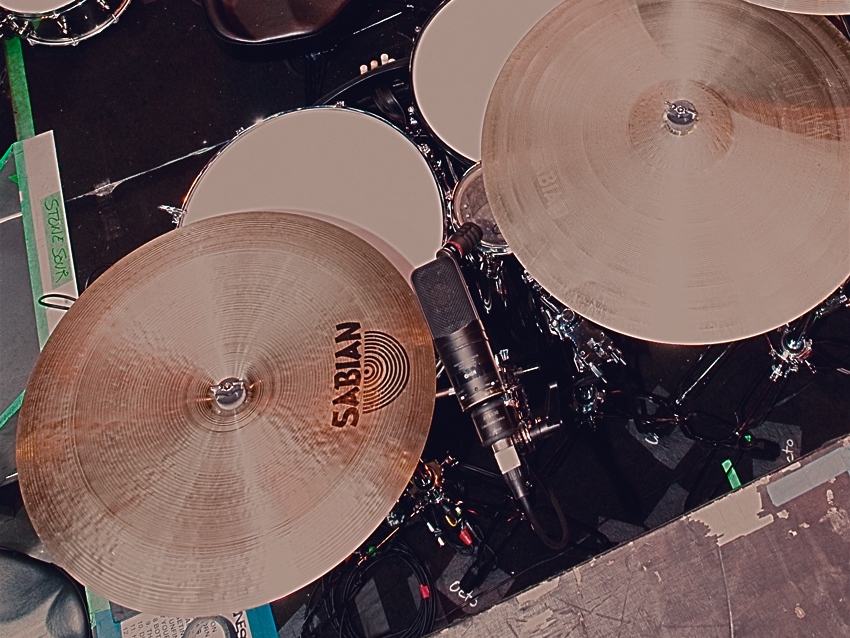
Drum miking and 'that Bonham sound'
Does the experience make things easier in the studio?
"I don’t give them [producers] a vague idea, I’ll tell them: ‘Let’s try these mics and these compressors, maybe this can give us the sound we’re looking for. Make the kit more of a mono direction, less overhead left and right, just one overhead, a kick mic and one snare mic then two room mics and see what you get out of that’.
"Threadbare was the one song I got to experiment a lot with miking and recording. I think we got the sound I always wanted to get. We were trying to go for that wide-open Bonham room sound from When The Levee Breaks. We got it pretty close, I think. Right down to the kit which was tuned up really high with no hole in the kick.
"I’d always wanted to record a song with that drum sound and mix it with a more contemporary drum sound."
Next: in the studio
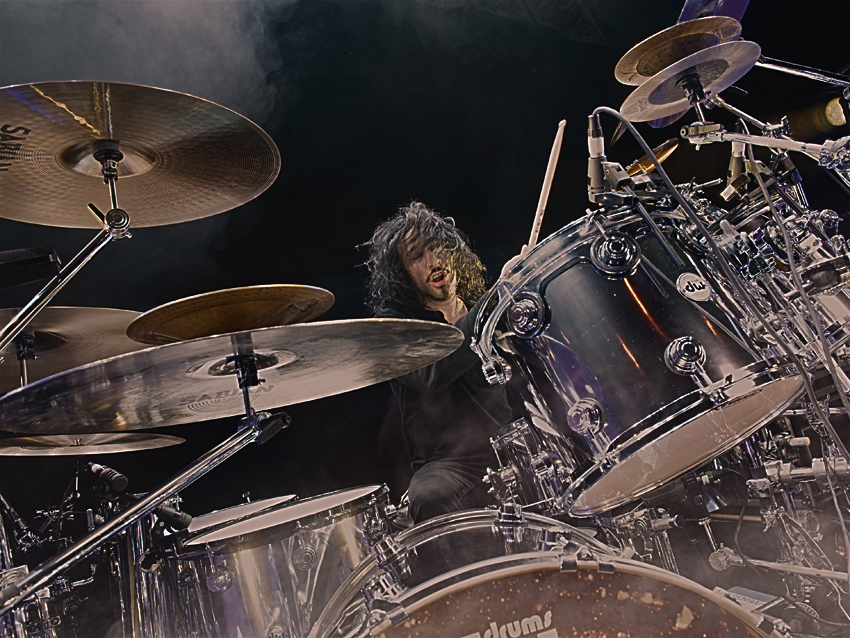
In the studio
It must be a producer’s dream that you know what you’re asking for in the studio.
“I can throw frequencies at them and tell them what I want. Some don’t like it! I ran into that with monitor engineers live. I’ll be like, ‘Can you take a little bit of 160, 600 out,’ and they’ll give me a cock-eyed look. They’ll be like, ‘That’s cool, that works’. I’ll say, ‘Yeah, I used to do sound,’ and they’ll be like, ‘Oh you used to do sound? Okay, get the f**k out of this room!’
"But it’s definitely an added plus for the drummer and the engineer to be able to speak the same language, especially when it comes to frequencies and miking. Not saying I know everything about miking, but I know how to get a certain sound in a certain way. I’m always open to new ways of miking and technique."
"But it’s definitely an added plus for the drummer and the engineer to be able to speak the same language, especially when it comes to frequencies and miking. Not saying I know everything about miking, but I know how to get a certain sound in a certain way. I’m always open to new ways of miking and technique."
Next: developing as a drummer
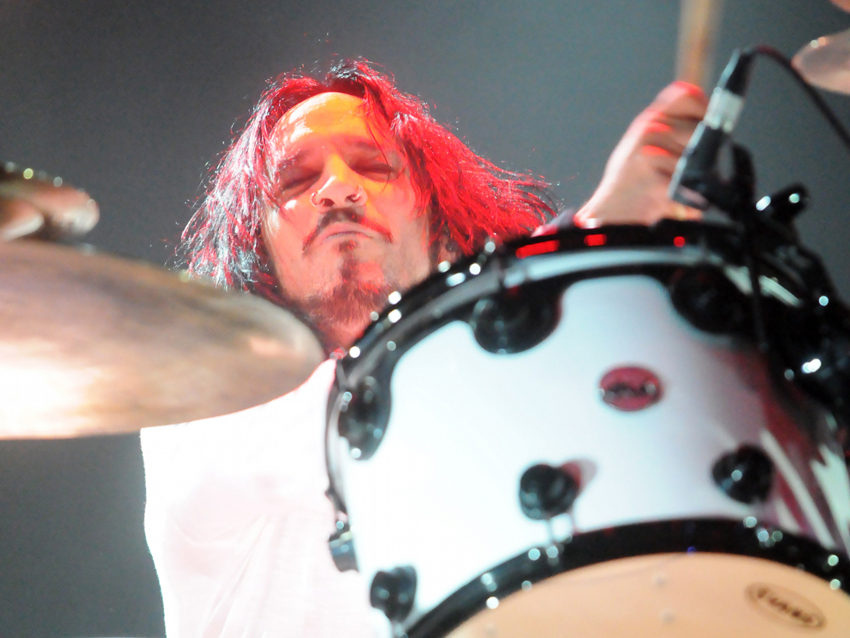
Developing as a drummer
Has all that helped you develop as a player?
"It helps me create pockets in the songs of where I can lash a bit in rolls, or open chords more in the chorus or have counter rhythms that won’t step over what I’m doing on the drums. Just learning how to make space for everything with melodies and beats definitely helps.
"It lends a big hand. It’s important to me, but everybody’s different. It gets my head at rest. It’s an OCD, I guess! But it’s a good OCD."
Next: being a multi-instrumentalist
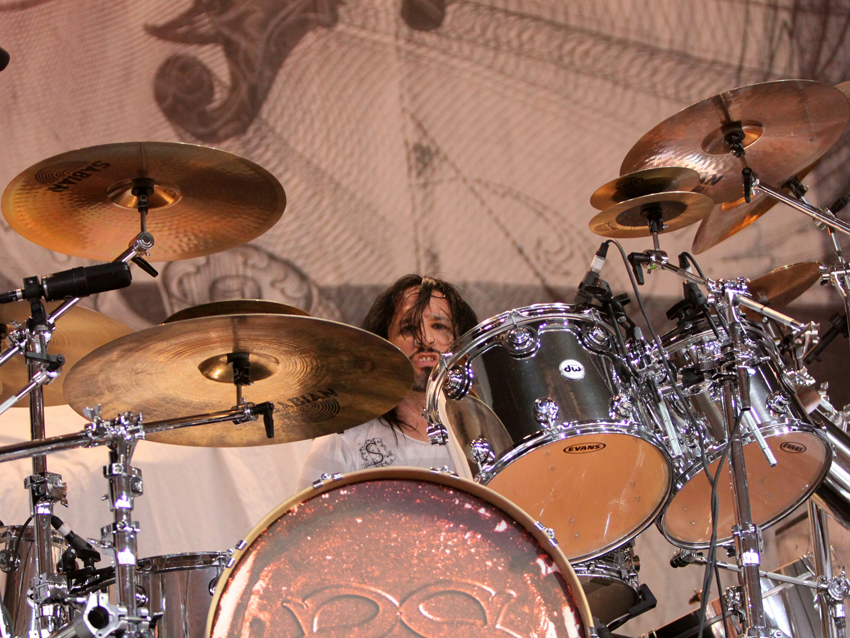
Being a multi-instrumentalist
Being able to play several instruments is obviously another big help in writing.
"Absolutely. It gives me something to play to. I’ll write a couple of parts and have a click track with the guitar parts on and loop it. I’ll just play to those parts until I find something that’s right, like Threadbare was all to a click. The first half wrote itself.
"I’m always testing out different ways. It’s nice to play to something. Yeah, you can play to it in your head, but it’s nicer to have something to play to so you can feel it and get the emotion out and the pocket, groove and vibe."
Next: production gear and approach
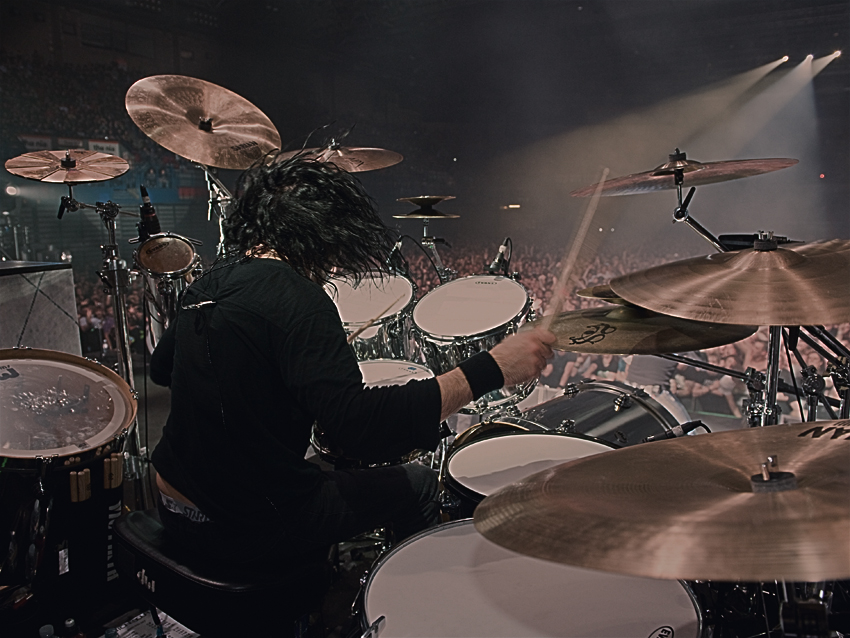
Production gear and approach
Which gear, production wise, do you tend to use?
"I use Logic Pro 8 along with Contact, which is a plug-in you can use on Logic or Pro-Tools. I use Vienna Instruments a lot mostly for percussion and string ensembles. I use the Artera plug-ins, the Moog and patch-based synth and the Oscar, I use those synthesiser sounds.
"Once I’m happy with what I have I’ll make .WAV files of every instrument and put it into Pro-Tools and mix it in there. On Pro-Tools when doing the Stone Sour demos I used WAV SSL bundle, which is great. It’s like having a virtual SSL board. Sure it’s not going to sound as big, but it gives you a similar characteristic and sound to an SSL."
Next: Audio Secrecy producer Nick Raskulinecz on working with Roy
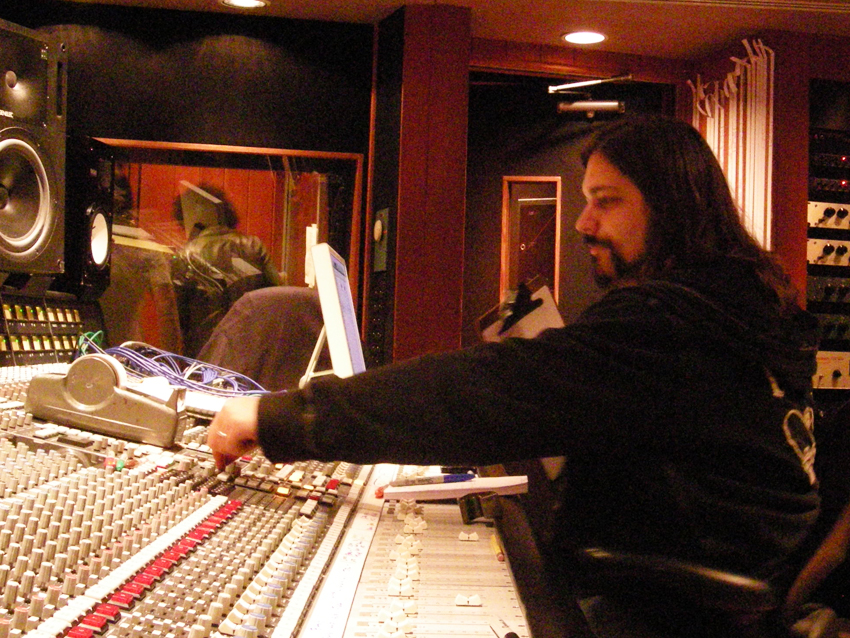
Audio Secrecy producer Nick Raskulinecz on working with Roy
How was working with Roy on Audio Secrecy?
Nick Raskulinecz: "Roy is amazing. He’s a great guy and a super-talented musician. I can’t say enough good stuff about him. He’s one of the best drummers I’ve ever recorded. He’s probably in the top five. He’s super-creative, he plays great for the songs, he knows when to go off and when to hold it down. He sets such a high bar with his performances.
"He’s also a songwriter which is great, that really helps a lot in the studio because he’s able to step back and realise it’s more about the song than what he’s doing personally. Some songs he’s not doing much, but the beautiful thing about Roy is that even when he is not doing much it sounds like he’s doing a lot."
Does Roy’s songwriting and production experience help when it comes to recording in the studio?
"Absolutely. Without question that is an asset. Roy is a great producer and engineer. At the beginning of the record we had a talk about me wanting him to just play and not worry about engineering and producing. Give me everything you’ve got, basically, and that’s what he did. We tracked two or three songs a day and he gave me everything he had on every take. That’s why his drum tracks are so killer."
Is he hands-on in the studio with nailing his sound?
"Yeah, to a certain point. We’ve got a great relationship in that he trusts me. If he heard something he didn’t like we would address it and tweak it and make it better. But he wasn’t over-involved, it was the perfect amount. He’s easy to work with if he trusts you. He knows I’m not going to make his drums sound like s**t. He knows that I am just as into his drums as he is.
"Recording drums is kinda my favourite part of making an album."
Next: Roy the talent
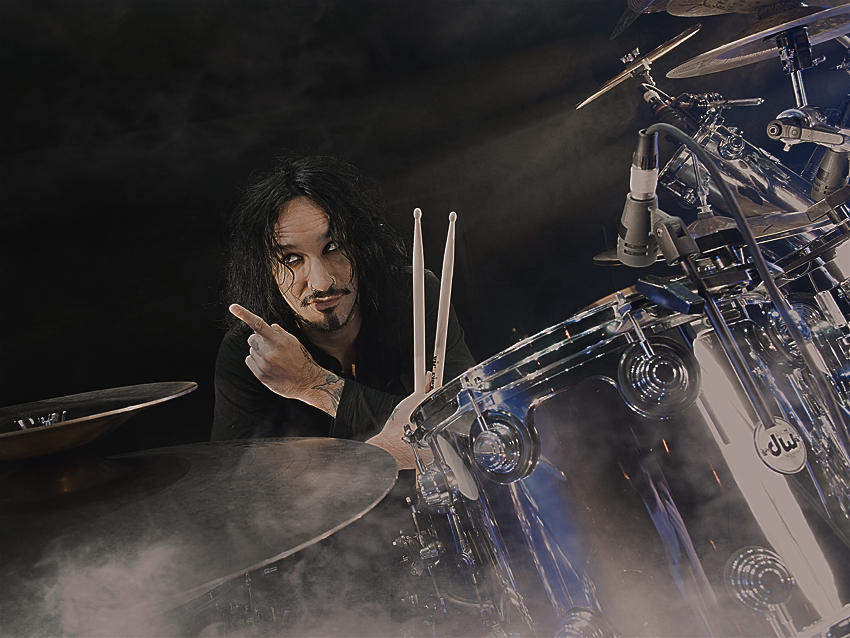
Roy the talent
Did you work closely with Roy in writing the beats on the album?
"I have quite a bit of input on drums. Where the fills are, what kind of fills there are, what cymbal to go to, crash versus the ride. I’m pretty in on all of that. Roy trusts me so he’ll go with it. I don’t usually get much resistance from drummers. As soon as drummers figure out how into drums I am that puts them at ease."“Part of making a record is trying things. You never know until you try something and listen back to it, and Roy knows that."
Roy’s known for being a hard-hitting drummer live, is he like that in the studio?
"Even more. He’s an animal. He hits so good and hard. He’s very passionate. He eats, lives and breathes it.”
You mentioned Roy as being in the top five drummers you’ve worked with. Who else would be in there?
"Neil Peart. Taylor Hawkins. Dave Grohl. First and foremost they’re all great people, that’s step one. Everything after that falls into place.
What do you say about Neil?
"He’s from a different planet. Then you’ve got Taylor who is from the planet next to Neil, they’re from the same solar system. Then you’ve got a guy like Grohl who is one of the best drummers in the world. Nobody plays for the song like Dave Grohl does.
"Another is Sean Kinney from Alice In Chains. He’s got a sound and style that nobody else has. Then you get a guy like Roy who is so passionate and hungry and over-the-top talented."
Liked this? Now read: Slipknot's Joey Jordison's drum setup in pictures
Connect with MusicRadar: via Twitter, Facebook and YouTube
Get MusicRadar straight to your inbox: Sign up for the free weekly newsletter
Rich is a teacher, one time Rhythm staff writer and experienced freelance journalist who has interviewed countless revered musicians, engineers, producers and stars for the our world-leading music making portfolio, including such titles as Rhythm, Total Guitar, Guitarist, Guitar World, and MusicRadar. His victims include such luminaries as Ice T, Mark Guilani and Jamie Oliver (the drumming one).

